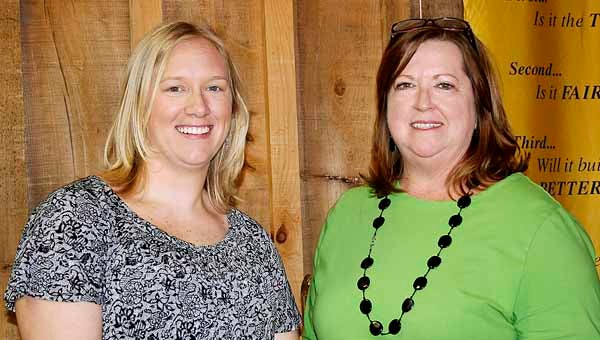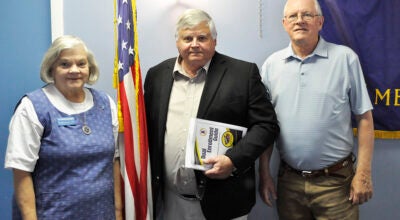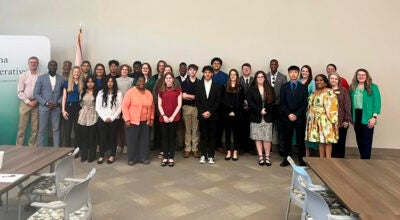Rotarians talk hummingbirds
Published 11:00 pm Wednesday, May 15, 2013

Carrie Threadgill, left, a biologist with the Alabama Division of Wildlife and Freshwater Fisheries, was the Brundidge Rotary Club program guest of Dixie Shehane Wednesday.
A hummingbird beats its wings at about 80 strokes a second. It can fly an escape route at 50 miles per hour and can stop still in an instant. The hummingbird can hover, dart, fly backwards or fly straight up. Not bad for a bird that is about three inches long, weighs about one-fifth of an ounce and has a wingspan of four inches.
Those are some of the facts that Carrie Threadgill, a biologist with the Alabama Division of Wildlife and Freshwater Fisheries, shared with members of the Brundidge Rotary Club Wednesday.
Threadgill received a bachelor’s degree in wildlife science and a master’s degree, specializing in ornithology, from Auburn University. As a state biologist, she is also the quail coordinator for the state.
Threadgill told the Rotarians that she has been passionate about birds since childhood. She has a special affinity for hummingbirds, specifically the ruby-throated hummingbirds.
“The ruby-throated hummingbird is a common, breeding resident of Alabama,” she said. “It’s a woodland bird that frequently visits gardens and is the only hummingbird that breeds east of the Mississippi River. Its breeding grounds range from southern Canada to the Gulf Coast.”
Threadgill said that the ruby-throated hummingbird often winters in Alabama rather than make the long journey across the Gulf Coast to Central America.
“That migration route is 500 miles and takes about 20 hours,” Threadgill said. “During all that time, the hummingbirds are flying. Their wings never stop beating. That’s a long journey for a bird that weighs about three grams.”
Prior to their migration, Threadgill said, the hummingbirds take in as much of the sweet nectar or sugar water as they can.
“When they reach their destination and are feeding, you can walk up to them and they won’t fly away,” she said. “They are just too tired.”
Many Alabama residents have hummingbird feeders in their yards as way of encouraging the birds to come and to stay. Threadgill said that a mixture of one part table sugar and four parts water is as alluring to the hummingbirds as the store bought mixtures.
“Hummingbirds are attracted to red and other bright colors but there’s no need to add red coloring to the homemade mixture,” she said. “Most hummingbird feeders are bright colored.”
Because hummingbirds are territorial, Threadgill suggested hanging several feeders when possible.
“It’s a good idea to place the feeders where one can’t be seen from the other,” she said. “That way, there’s no competition among the hummingbirds.”





